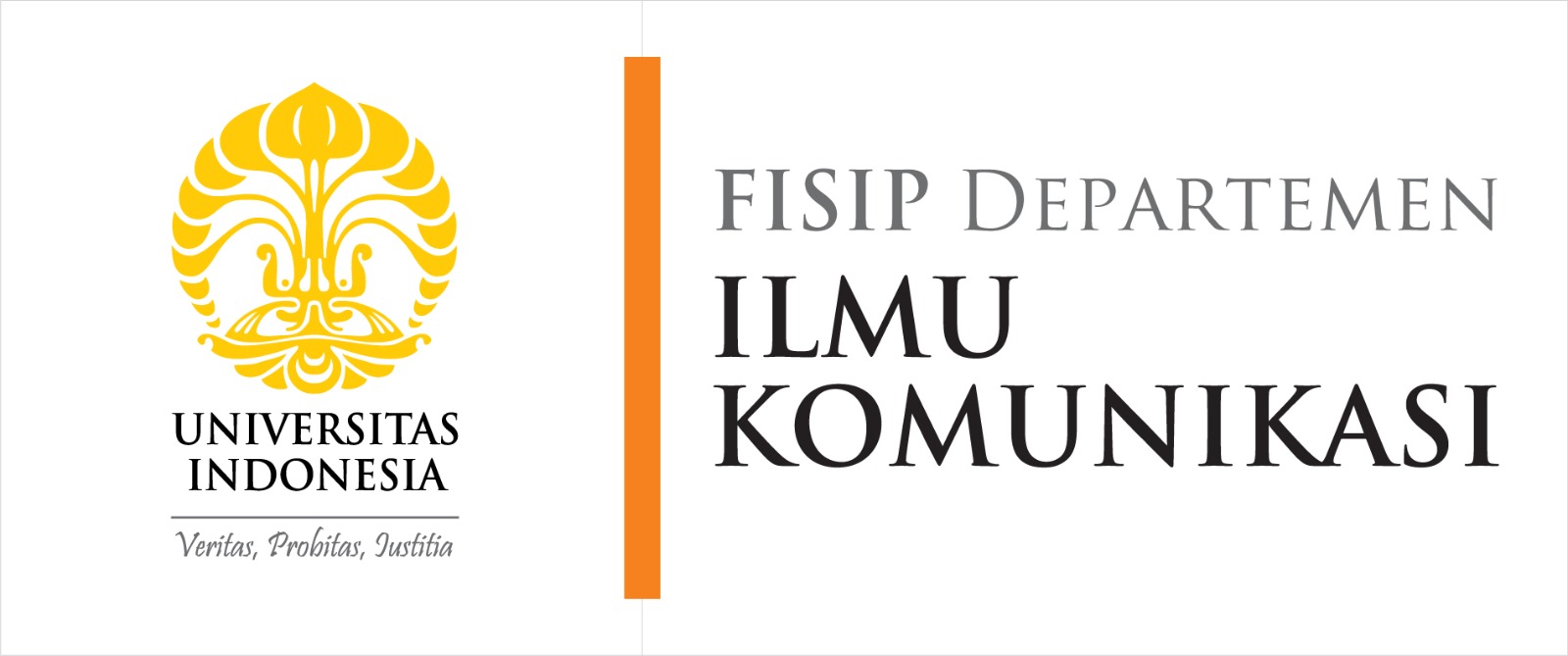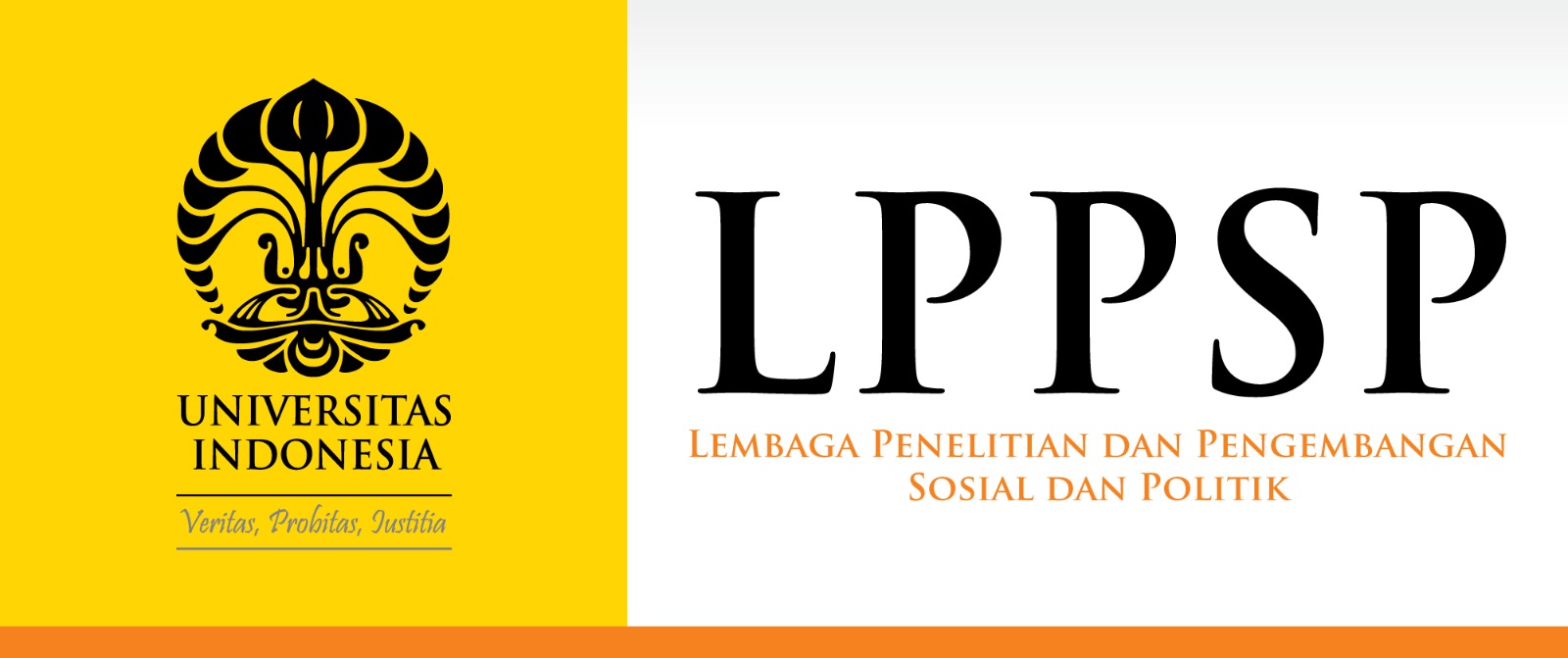JURNAL KOMUNIKASI INDONESIA
Abstract
As a medium for reading books through audio formats, digital audiobook are experiencing significant growth in popularity with a more diverse audience than ever before during the COVID-19 pandemic. Book publishers have begun to evolve to consider publishing books in audio format, in addition, the presence of audiobook on various alternative platforms based on streaming and subscription offers convenience to read a book. This study aims to survey the development of audiobook in the current digital era, especially in Indonesia with the presence of streaming and subscription media platforms. Furthermore, by reassessing the concept of reading books in the digital era to understand reading an audiobook through hearing. By using the literature review method, this research has seen a change in the conception of reading books which was previously only associated with reading writing through the eyes, because the presence of digital audiobook allows readers to carry out reading activities with high mobility by only through the eyes or the sense of hearing. Simplicity through listening activities brings audiobook into popular media that is present in various learning activities in Indonesia and also brings new experiences in enjoying literature through sound that offers readers to read books by listening. Reading is an important part of learning, with every day audiobook are increasing literacy through new reading media. Flexibility for readers aside from making audiobook a product of written books by offering readers the option to choose a format that supports their literacy and literary experience. This research provides findings for the audio industry, which is currently popular as well as an alternative in the reading industry, especially in Indonesia in today’s digital era.
Bahasa Abstract
Sebagai media membaca buku melalui format audio, audiobook digital mengalami pertumbuhan popularitas yang siginifikan dengan pendengar yang lebih beragam dari sebelumnya selama pandemi COVID-19. Penerbit buku sudah mulai berevolusi untuk mempertimbangkan mempublikasi buku dengan format audio, selain itu hadirnya audiobook di berbagai platform alternatif berbasis streaming dan langganan menawarkan kemudahan untuk membaca sebuah buku. Penelitian ini bertujuan untuk mennsurvei perkembangan audiobook di era digital saat ini khususnya di Indonesia dengan hadirnya platform media streaming dan langganan. Selanjutnya, dengan menilai kembali konsep membaca buku di era digital untuk memahami membaca sebuah audiobook melalui pendengaran. Dengan menggunakan metode literature review penelitian ini melihat adanya perubahan mengenai konsepsi membaca buku yang sebelumnya hanya dikaitkan dengan membaca tulisan melalui mata, karena hadirnya audiobook digital memungkinkan pembaca untuk melakukan aktifitas membaca dengan mobilitas tinggi dengan hanya melalui mata atau indra pendengaran. Kesederhanaan melalui aktifitas mendengarkan membawa audiobook menjadi media populer yang hadir diberbagai aktiitas pembelajaran di Indonesia dan juga menghadirkan pengalaman baru dalam menikmati sastra, melalui suara yang direkam menawarkan pembaca untuk membaca buku dengan mendengarkan. Membaca merupakan bagian penting dari pembelajaran, dengan harinya audiobook telah akan meningkatkan literasi melalui media membaca baru. Fleksibilitas bagi pembaca tidak lagi membuat audiobook menjadi sebuah produk sampingan dari buku tulisan dengan menawarkan pilihan bagi pembaca untuk memilih format yang mendukung pengalaman literasi dan sastra mereka. Penelitian ini memberikan temuan bagi industri audio yang sedang populer sekaligus alternatif dalam industri membaca khusunya di Indonesia di era digital saat ini.
References
Anderson, P. (2021, February 25). AAP StatShot: US Trade Book Sales
Up 9.7 Percent for 2020. Publishing Perspective. https://pub- lishingperspectives.com/2021/02/aap-statshot-sees-us-trade- book-sales-up-9-7-percent-for-2020-covid19/
Baumeister, R. F., & Leary, M. R. (1997). Writing Narrative Literature Re- views. Review of General Psychology, 1(3), 311–320. https:// doi.org/10.1037/1089-2680.1.3.311
Best, E. (2020). Audiobooks and literacy A rapid review of the literature. https://eric.ed.gov/?id=ED607775
Best, E., Clark, C., & Picton, I. (2020). Children, young people and au- diobooks before and during lockdown. https://files.eric.ed.gov/ fulltext/ED607856.pdf
Bolter, J. D., & Grusin, R. A. (2000). Remediation : understanding new media. https://monoskop.org/images/a/ae/Bolter_Jay_Da- vid_Grusin_Richard_Remediation_Understanding_New_Me- dia_low_quality.pdf
Bonk, A. E., Nurdiani, N., & Katarina, W. (2021). The application of acces- sibility in public library building design in Jakarta, Indonesia. IOP Conference Series: Earth and Environmental Science, 794(1),
012163. https://doi.org/10.1088/1755-1315/794/1/012163
Chion, M. (2019). Audio-Vision: Sound on Screen. Columbia University
Press. https://doi.org/10.7312/chio18588
Computer Hope. (2021, April 12). Audio. Computer Hope. https://www.
computerhope.com/jargon/a/audio.htm#:~:text=Audio%20
is%20a%20term%20used,heard%20through%20speakers%20 or%20headphones.
Dali, K., & Brochu, L. K. (2020). The Right to Listen: A Not So Simple
Matter of Audiobooks. Library Resources & Technical Services,
64(3), 106–119. https://doi.org/10.5860/lrts.64n3.106-119
Edison Research. (2021, March 11). The infnite dial 2021. Edison Research. https://www.edisonresearch.com/the-infinite-di- al-2021-2/
Fadhli, M. (2021). Applying an Audiobooks Application and the Litera- ture Circle Strategy in an Online Class to Teach Reading: How? Journal of Language Education, 5(2). https://doi.org/10.24090/ tarling.v5i2.5239
Given, J. (2003). Turning off the television: Broadcasting’s uncertain fu- ture. UNSW Press.
Grant, M. J., & Booth, A. (2009). A typology of reviews: an analysis of
14 review types and associated methodologies. Health Informa- tion & Libraries Journal, 26(2), 91–108. https://doi.org/10.1111/ j.1471-1842.2009.00848.x
Hampson Lundh, A., & Smith, B. (2016). Two King Lears: The Meaning Potentials of Writing and Speech for Talking Books. Proceedings from the Document Academy, 2(1). https://doi.org/10.35492/do- cam/2/1/6
Hasa. (2021, August 24). What is the Difference Between Sound and Voice. Pediaa. https://pediaa.com/what-is-the-difference-be- tween-sound-and-voice/
Have, I., & Pedersen, B. (2021). Reading Audiobooks. In L. Elleström (Ed.), Beyond Media Borders, Volume 1 Intermedial Relations among Multimodal Media (Vol. 1, pp. 197–216). Springer Na- ture Switzerland AG. https://library.oapen.org/bitstream/han- dle/20.500.12657/42926/2021_Book_BeyondMediaBordersVol- ume1.pdf?sequence=1#page=218
Hutton, E. (2005, October 21). Audiobooks Deserve Marketing,Too. Pub- lishers Weekly. https://www.publishersweekly.com/pw/by-topic/ columns-and-blogs/soapbox/article/31694-audiobooks-de- serve-marketing-too.html
Ismandari, F. (2019). Disabilitas. Infodatin, Pusat Data Dan Informasi Ke- mentrian Kesehatan RI.
Jaworski, R. (2021, April 9). Numbers and facts you need to know about audio content in 2021. Trinity Audio. trinityaudio.ai/numbers- and-facts-you-need-to-know-about-audio-content-in-2021
Kelley, A. (2019). Evolution of sound – audio technology past, present, and future. Insights . https://insights.ges.com/us-blog/evolu- tion-of-sound-audio-technology-past-present-and-future
Kemp, S. (2022). datareportal.com. https://datareportal.com/reports/
digital-2022-indonesia
Killmeier, M. A. (2013). Theater of the Mind: Imagination, Aesthetics, and
American Radio Drama. Journal of Radio & Audio Media,
20(1), 216–218. https://doi.org/10.1080/19376529.2013.778684
Mamat, M., Ali, T., Hashim, N., & Hazari, N. A. (2021). Buku Audio Sas- tera sebagai Alternatif Pembacaan Karya Sastera dalam Era Digital. Jurnal Pengajian Melayu, 32(1), 15–28. https://doi. org/10.22452/jomas.vol32no1.2
Morgan, G. (2003). A word in your ear: library services for print disabled readers in the digital age. The Electronic Library, 21(3), 234–
239. https://doi.org/10.1108/02640470310480489
Mujiningsih, E. N., Purwaningsih, Yetti, E., & Suryami. (2022). AUDIO- BOOK DALAM NOVELTOON CEO GONDRONG ITU, SUAMIKU KARYA JULIES. Sinar Bahtera. http://sinarbahtera.kemdikbud. go.id/index.php/SB/article/view/78/13
Pedersen, B., & Have, I. (2012). Conceptualising the audiobook ex- perience. SoundEffects An Interdiciplinary Journal of Sound and Sound Experience, 2(2), 79–95. https://doi.org/https://doi. org/10.7146/se.v2i2.6967
Praha, R. D. (2020). Outlook Pariwisata & Ekonomi Kreatif Indo- nesia. https://s3-kemenparekraf.s3.ap-southeast-1.ama- zonaws.com/Buku_Outlook_Pariwisata_dan_Ekonomi_Kreat- if_2021_6768c3fcf0.pdf
Preston, A. (2020, August 2). A word in your ear… why the rise of audio- books is a story worth celebrating. The Guardian. https://www. theguardian.com/books/2020/aug/02/a-word-in-your-ear-why- the-rise-of-audiobooks-is-a-story-worth-celebrating
Rahman, A., & Hajar, I. (2020). The Effect of Audiobook on Reading
Comprehension of the Eleventh Grade Students of SMA Negeri
2 Buru. 7(2). www.audiopub.org,
RNIB. (n.d.). Celebrating the history of Talking Books. Royal National Insti- tute of the Blind. Retrieved June 1, 2022, from https://www.rnib. org.uk/reading-services/celebrating-history-talking-books#:~:- text=Today%2C%20Talking%20Books%20reach%20tens,- books%20to%20war%2Dblinded%20soldiers.
Rubery, M. (2008). Play it again, sam weller: New digital audiobooks and old ways of reading. Journal of Victorian Culture, 13(1), 58–79. https://doi.org/10.3366/E1355550208000088
Rubery, M. (2011). Audiobooks, Literature, and Sound Stud- ies (M. Rubery, Ed.; 1st ed.). Routledge. https://doi. org/10.4324/9780203818039
Rusmanayanti, A. (2021). The Use of Audiobooks as Part of Digital Liter- acies in Indonesian Students’ Perception.
Savitri, W. E., & Munir, A. (2022). The use of Xreading books & audios for extensive reading program. In Innovation on Educa- tion and Social Sciences (pp. 42–48). Routledge. https://doi. org/10.1201/9781003265061-6
Snelling, M. (2021). The Audiobook Market and Its Adaptation to Cul- tural Changes. Publishing Research Quarterly, 37(4), 642–656. https://doi.org/10.1007/s12109-021-09838-1
Sound Sight. (2022, March 13). What is the Difference between Audio and Sound? Soundsight. https://soundsightheadphones.com/ learn/what-is-the-difference-between-audio-and-sound/#:~:- text=In%20the%20end%3A%20Sound%20is,that%20we%20 share%20with%20others.
Storynory. (n.d.). About Storynory . Retrieved June 2, 2022, from https://
www.storynory.com/about-storynory/
Suhendra, M. F., Helmiawan, M., & Indrasari, N. P. (2020). Tantangan
Pelaku Penerbitan di Era Industri 4.0: Sebuah Tinjauan. Mediasi
- Jurnal Kajian Dan Terapan Media, Bahasa, Komunikasi, 1(1),
1–18. https://ojs2.polimedia.ac.id/index.php/mediasi/article/
view/397/260
Syahrul, N. (2019). Literature Engineering as an Increasing Efforts Litera- tion Movement in Young Generation. Multilingual, 18(1), 48–66. http://download.garuda.kemdikbud.go.id/article.php?arti- cle=1079244&val=16277&title=REKAYASA%20SASTRA%20
SEBAGAI%20UPAYA%20MENINGKATKAN%20GERAKAN%20
LITERASI%20DI%20KALANGAN%20GENERASI%20MUDA
Tattersall Wallin, E. (2021). Reading by listening: conceptualising au-
diobook practices in the age of streaming subscription ser- vices. Journal of Documentation, 77(2), 432–448. https://doi. org/10.1108/JD-06-2020-0098
Tattersall Wallin, E., & Nolin, J. (2020). Time to read: Exploring the timespac- es of subscription-based audiobooks. New Media and Society,
22(3), 470–488. https://doi.org/10.1177/1461444819864691
Tsany, A. P. (2021). The Implementation of Storynory Audiobook in Teaching Reading Narrative Text. Jurnal Pendidikan Indonesia (Japendi), 2(7).
Warsihna, J., Dandan, W., Oos, E., Anwas, M., Suryaman, M., Kosasih, R., Amri, A., & Ramdani, Z. (2021). THE URGENCY OF US- ING AUDIOBOOK IN GENERAL COURSE LEARNING. Jurnal Kependidikan, 5, 137–146. https://journal.uny.ac.id/index.php/ jk/
Yuwono, A., Rendy, F., & Yandha, K. N. (2020). Pengantar Teknologi Audio. https://indonesia.sae.edu/wp-content/uploads/2021/03/ Pengantar-Teknologi-Audio.pdf
Zable Fisher, M. (2021, January 7). Turn Up the Volume on Audiobooks.
Next Avenue. https://www.nextavenue.org/tune-into-audio- books/
Zein, M., M. Nuh, Z., Dardiri, D., Jasril, J., Candra, R. M., Hanafi, I., & Thahir, M. (2019). Hybrid Learning in Mathematics Learning (Experimental Study in SMA Negeri 1 Pekanbaru). Malikussaleh Journal of Mathematics Learning (MJML), 2(2). https://doi. org/10.29103/mjml.v2i2.2009
Recommended Citation
Elislah, Neli and Irwansyah, Irwansyah
(2022)
"Audiobook Industry: Reading by Using Ear in the Digital Age,"
JURNAL KOMUNIKASI INDONESIA: Vol. 11:
No.
2, Article 2.
DOI: 10.7454/jkmi.v11i2.1028
Available at:
https://scholarhub.ui.ac.id/jkmi/vol11/iss2/2
Included in
Gender, Race, Sexuality, and Ethnicity in Communication Commons, International and Intercultural Communication Commons, Social Influence and Political Communication Commons




